Kathmandu
I was thrilled to be landing in Kathmandu, fulling a long-time goal to travel to Nepal. It seemed that no matter where I had traveled in the past, I always came across other travelers who would rave about Nepal – a true backpacker’s utopia. And it didn’t disappoint, although Kathmandu was worlds away from my expectations.
Given Nepal’s reputation for scenic beauty and exotic culture, I had imagined Kathmandu to be a serine place, more monastery than metropolis. I was quickly corrected. Our drive from the airport to our hostel just outside Thamel (the tourist district of Kathmandu), showed Kathmandu to be a noisy, dirty city, much like those we found in Africa. Traffic rules were non-existent with motorcycles, bikes, and cars taking up any space on the road they could find, honking was consistent, and trash littered the sidewalks,. But over the course of our nearly week-long stay in Kathmandu, we quickly found that once we were able to see past the noise and dirt, Kathmandu was a charming city, with a fascinating history, great local snacks, beautiful temples, and an interesting culture far different from our own. Having come from Africa, the biggest change to me was the attitude of the locals, who seemed far prouder of their country and less resentful towards tourists. Perhaps it has something to do with the fact that Nepal has never been conquered, a fact we repeatedly heard while we were there.
Trekking Hub
For many travelers (ourselves included), Kathmandu’s biggest attraction is that it is the international gateway to Nepal’s famous treks. As such, the tourist areas are packed with signs advertising trekking companies and retail stores selling and renting outdoor goods. Every shop was nearly the same size, and sold nearly the same limited selection of goods. I couldn’t believe that a local entrepreneur hadn’t tried combining a few storefronts into a mega store with better selection. Would make a killing.
The Monkey Temple
Our first stop in Kathmandu was Swayambhunath, better known as the “Monkey Temple” due to the hundreds of monkeys that crawl and swing all over it. A Buddhist Stupa (temple-like point of prayer that is circular without an interior), Swayambhunath is perched on a hill above Kathmandu. It was beautiful in its simplicity and setting, and it was fascinating to watch the pilgrims pray and give offerings at the stupa. The pilgrims walk clockwise (ALWAYS clockwise) around the stupa, turning the prayer wheels (clockwise) and praying at the niches within the stupa.
Boudhanath Temple
Our second stupa was at Boudhanath, about an hour away from Kathmandu. Supposedly one of the centers of Tibetan Buddhism after the Chinese invasion, the stupa was even more magnificent than Swayambhunath. Roughly the same shape and design, Boudhanath is much bigger than Swayambhunath. It is also not set up away from the city, but right in the middle of the action – it is surrounded by 4 story buildings with shops selling religious paraphernalia and rooftop restaurants offering a panoramic view of the stupa. We loved sitting on the rooftop watching the crows circumnavigate the stupa as the sun set – each person praying on their own, but the crowd seemingly moving as a whole, around the watchful eyes of Buddha.
Temples and Palaces
Kathmandu has a number of intricately carved temples and palaces from its heyday as the center of an empire. Kathmandu and two close cities kept trying to one-up each other with their architecture, and the result is a number of buildings covered in beautiful wood carvings. Unfortunately due to my limited knowledge of Hinduism and the Hindu pantheon, the significance of most of the carvings was lost on me, but the beauty shows through regardless.
Soccer Game
One of our favorite events in Kathmandu was attending a Nepal v. Pakistan soccer game. We had been stuck in Kathmandu for a few extra days due to weather, and our guide mentioned that he and his friends were going to be going to the soccer game that night – would we like to come? Hell yes! Nepal was hosting the South Asian Soccer Championship (SAFF Championship), which our guide said was just tournament that was held because none of the countries were good enough to ever contend for the actual Asian soccer championship. The Nepal/Pakistan match we saw was a group match. The quality of the soccer was not great, but fun to be in such a one-sided crowd that desperately wanted its team to win. Nepal seemed to be the better team overall, but couldn’t finish. Pakistan was weaker, but had one or two standout players that kept them in the game. One of those players scored off a set play to put Pakistan ahead late in the first half. The stadium was devastated. It made for a solemn second half, but just as hope was fading and the crowds started to dissipate, in the 90th minute the youngest player on Nepal’s team – a 16 year old kid and supposedly the future of Nepal’s soccer team – scored a tying goal. The place went berserk. It was awesome.
One note: I was disappointed to find that there weren’t any fun Nepalese cheers or songs. All they sang was “Ne-Pal! Ne-Pal!” With all their history, there must be a few patriotic or insulting songs to unite the crowd.
Indra Jatra Festival
Our last day in Kathmandu coincided with the opening of the Indra Jatra festival. I still don’t quite understand the significance of the festival (Wikipedia has an entry), but we were told it is one of the biggest festivals in Kathmandu. The main square was madness, with people squeezing in everywhere. The president and other dignitaries gathered on a balcony overlooking the square, as people in costumes danced around and generally ran wherever they wanted, bringing with them hordes of teenagers like pied pipers. But in an already-packed square, the teenagers’ movements would crush everyone they were running into, leading to lots of pushing, shoving, and falling down.
Finally the police cleared a path and three floats were pulled through the square. When they had passed, the show was quickly over and without any other indication everyone started to leave.
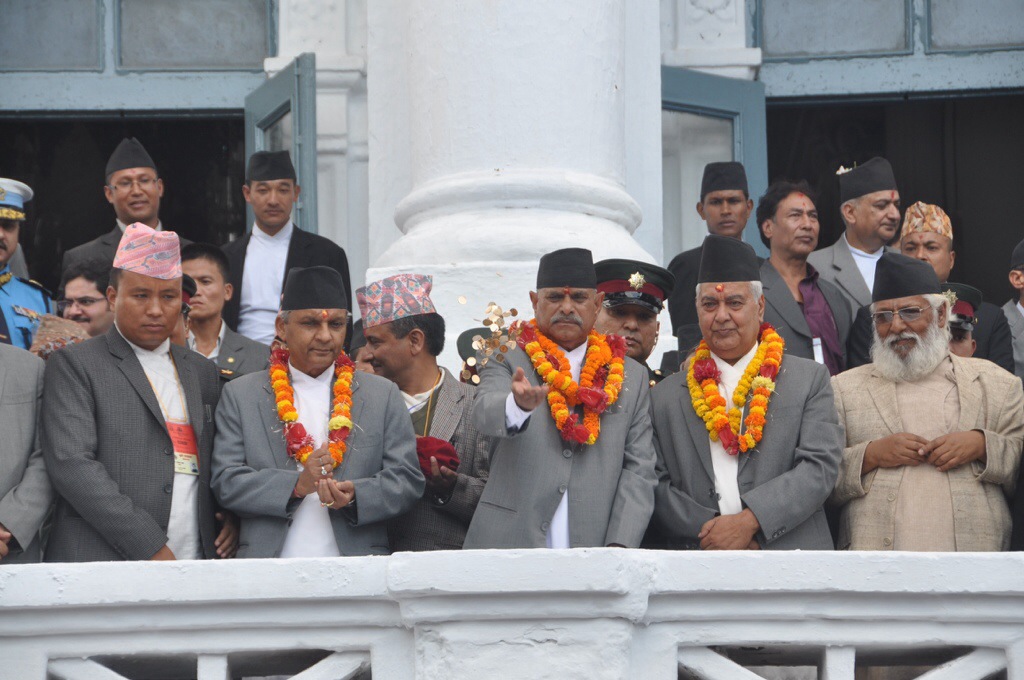
The president of Nepal. Apparently (as seen in the picture) he greets his constituents by throwing money at them… get on this Obama!
Food
Before arriving in Kathmandu I had never tasted Nepalese food and I did not have high expectations for it. But, food turned out to be one of our highlights of the country. Our favorite dish is momos – steamed or fried dumplings. Offered in various meat (but never beef, of course) and vegetarian varieties, they were consistently good. The best, however, were at Yangling’s in Thamel.
The national dish of Nepal is Dal Bhat (with a silent H of course!). We were told that many Nepalese will eat dal bhat two times a day, seven days a week. Much like Indian Thali, the dish consists of a large serving of rice, along with a bowl of lentils and a curry to eat with the rice. From that foundation other small curries can be added, and of course each element of the dish is slightly different at each restaurant. The most unique element of dal bhat (and my favorite part of the meal while trekking) is that dal bhat requires the host/server to offer extra helpings. Our guide told us the tradition comes from serving the meal to guests in your home, where it is always polite to try to make guests eat more food. Regardless, over the numerous times we had dal bhat in restaurants and tea houses, in the city or the country, we were always offered second (and third) helpings. After a long day of hiking, there was nothing better.

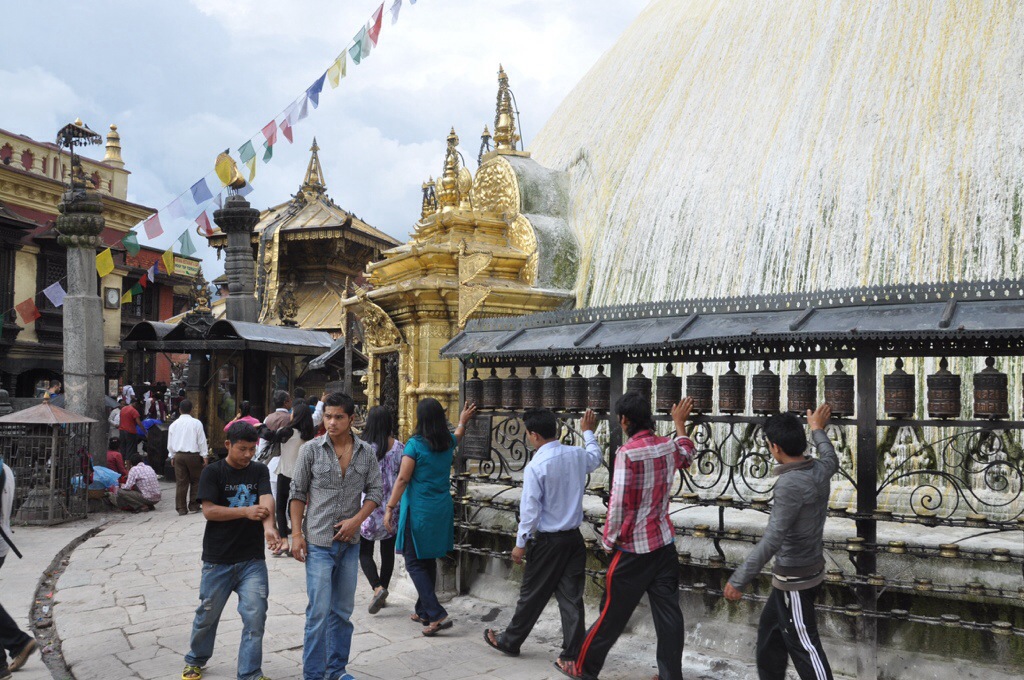
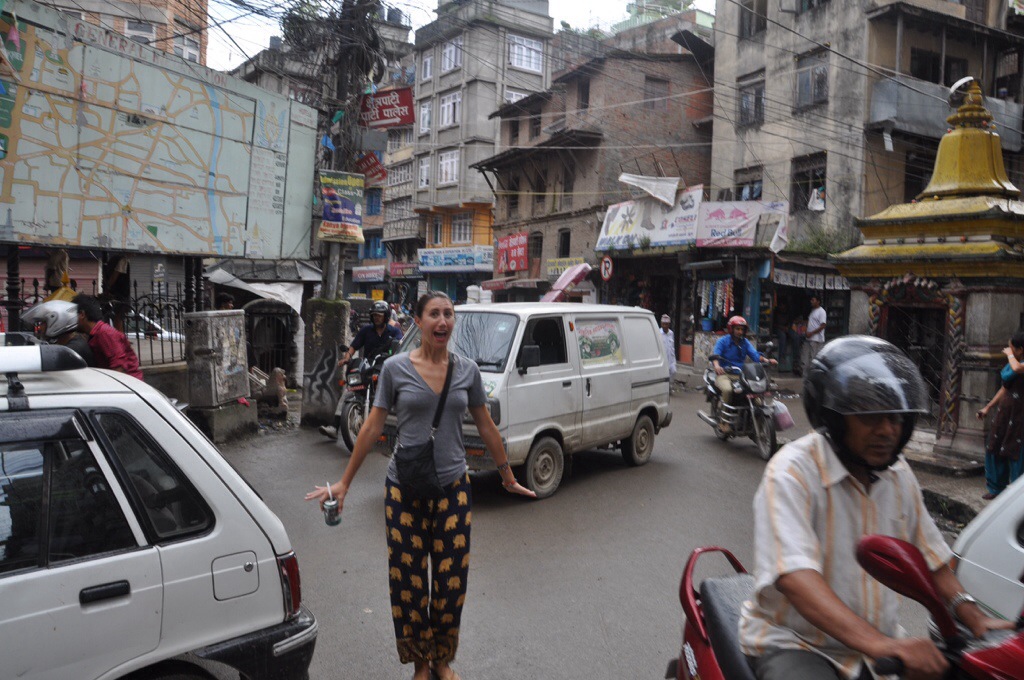
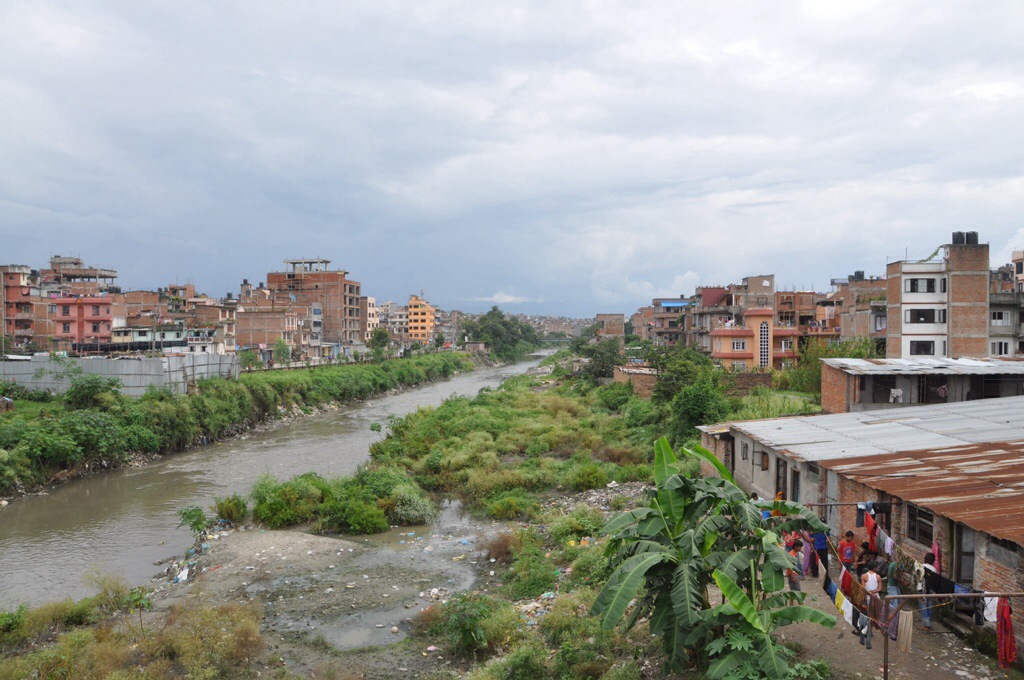
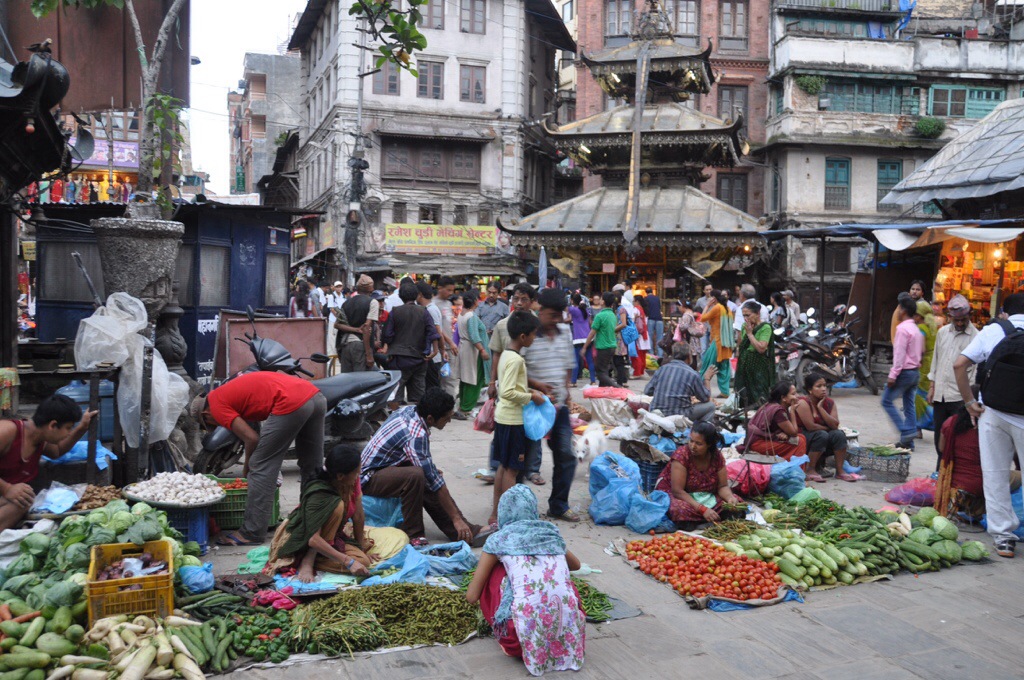
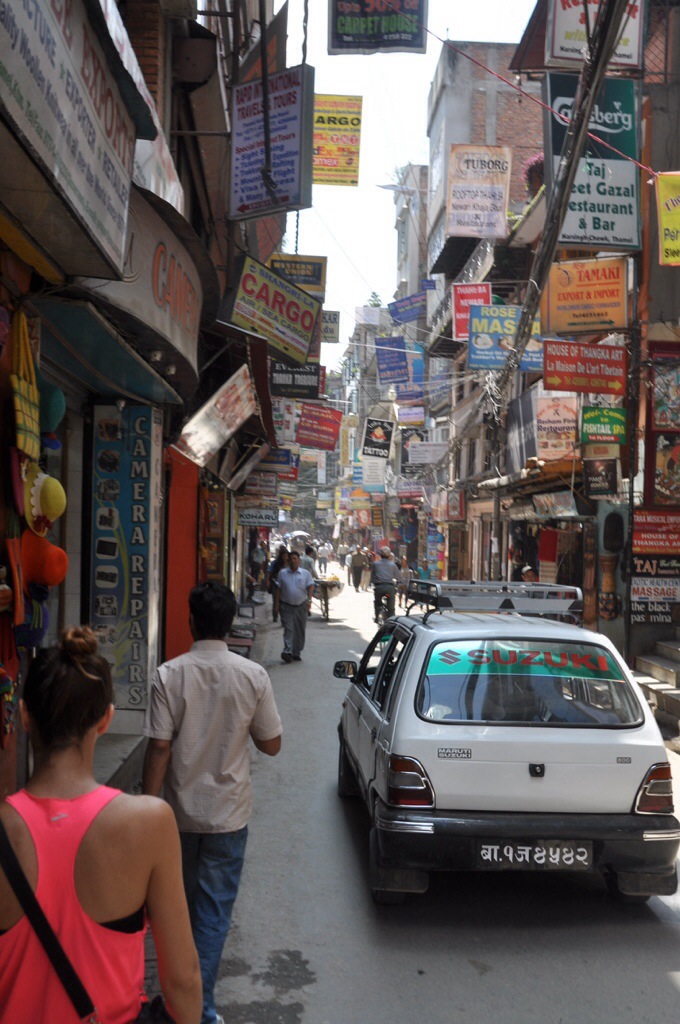
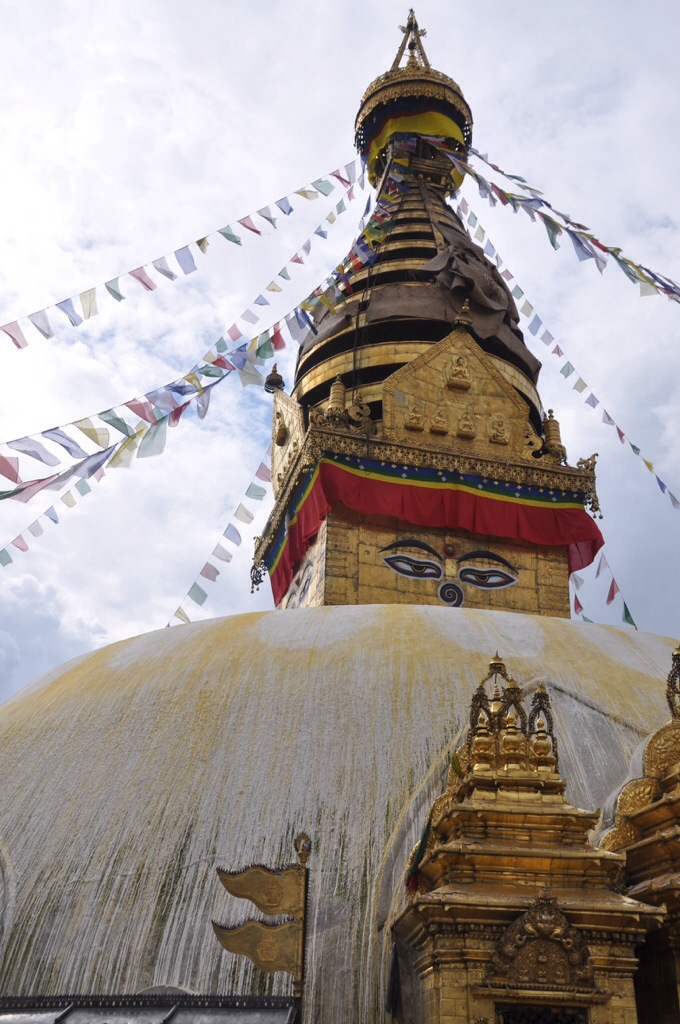
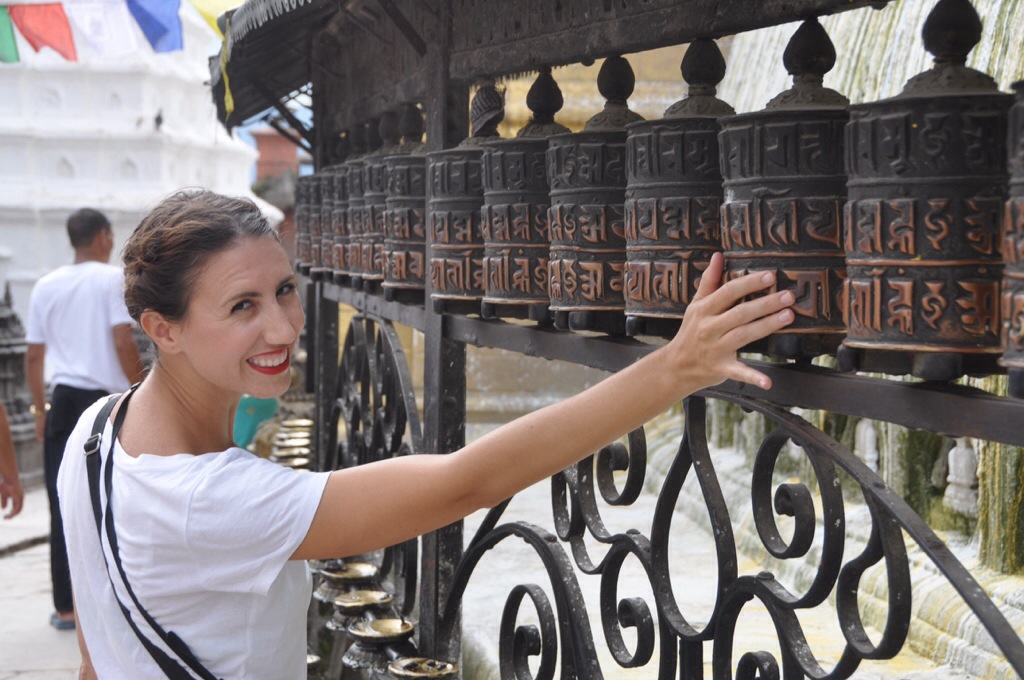
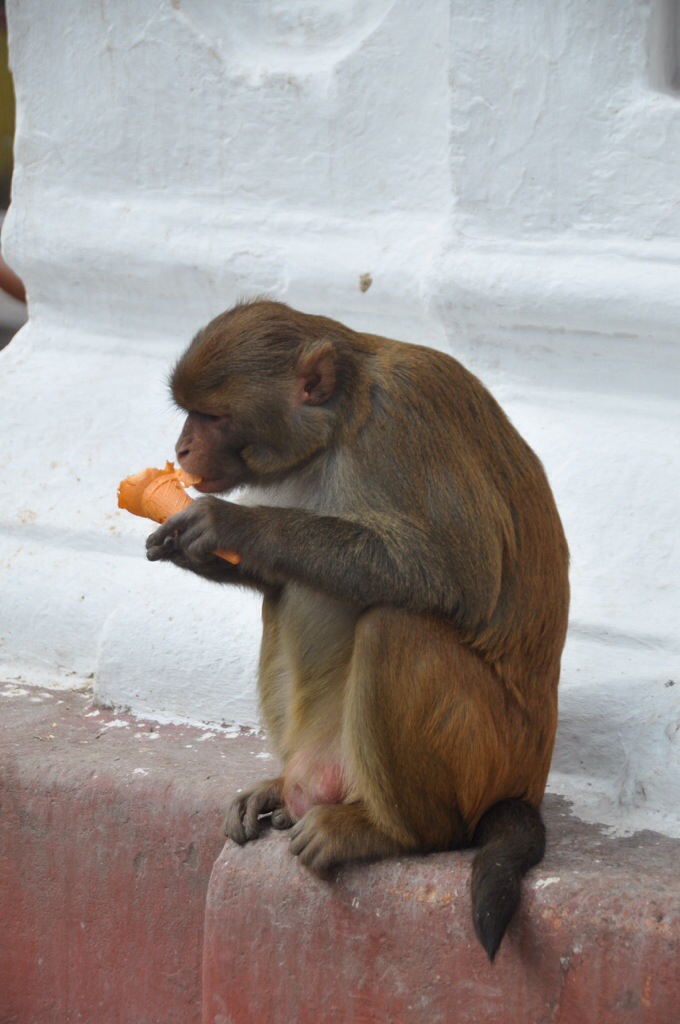
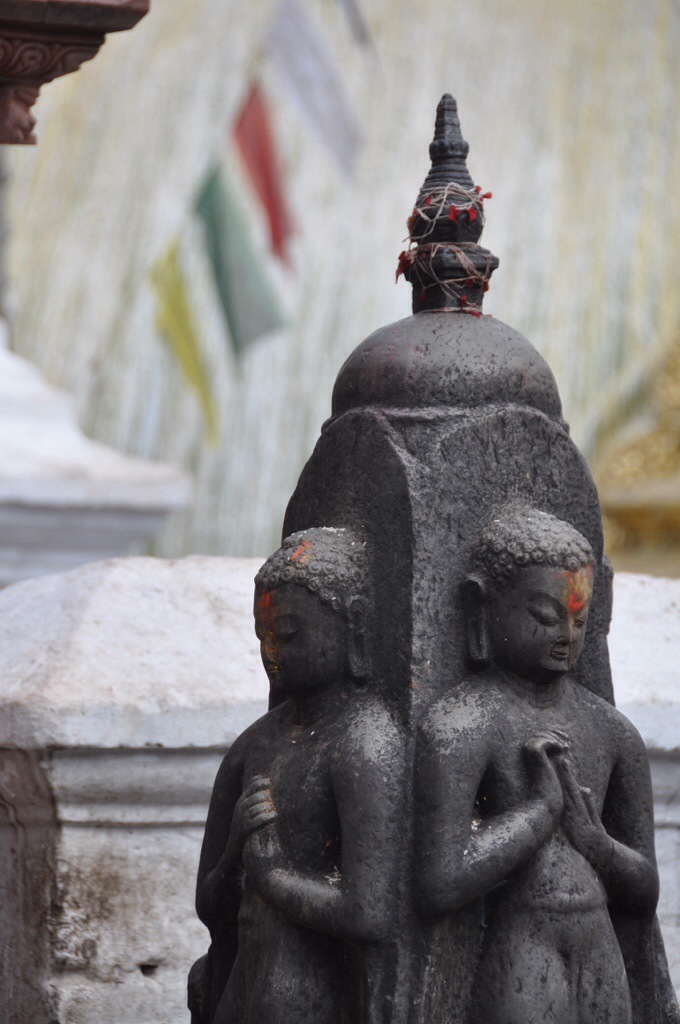
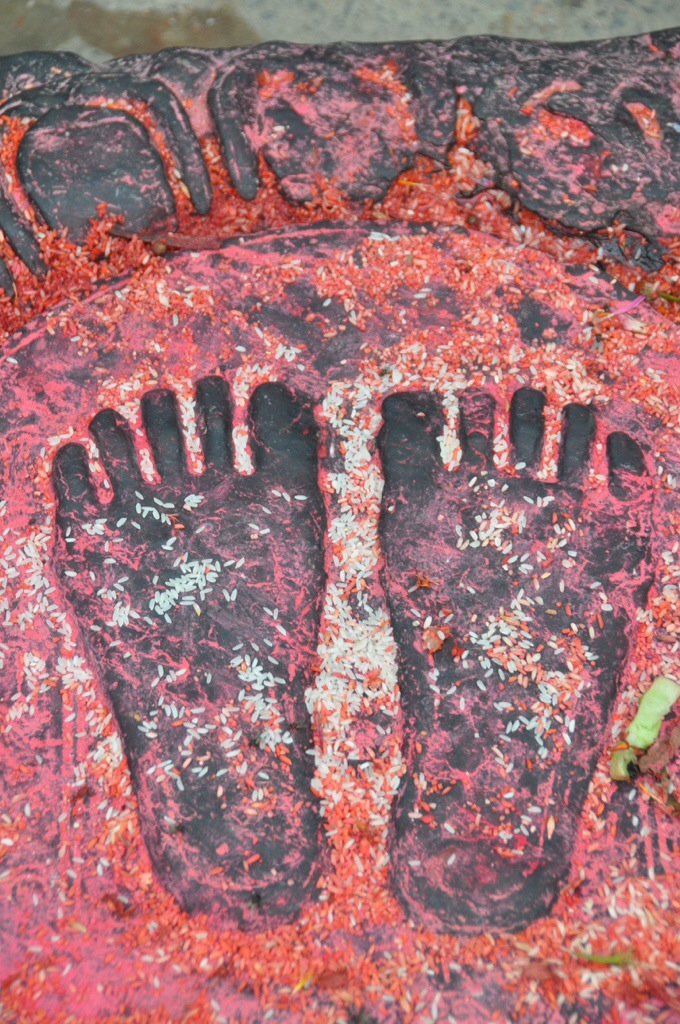
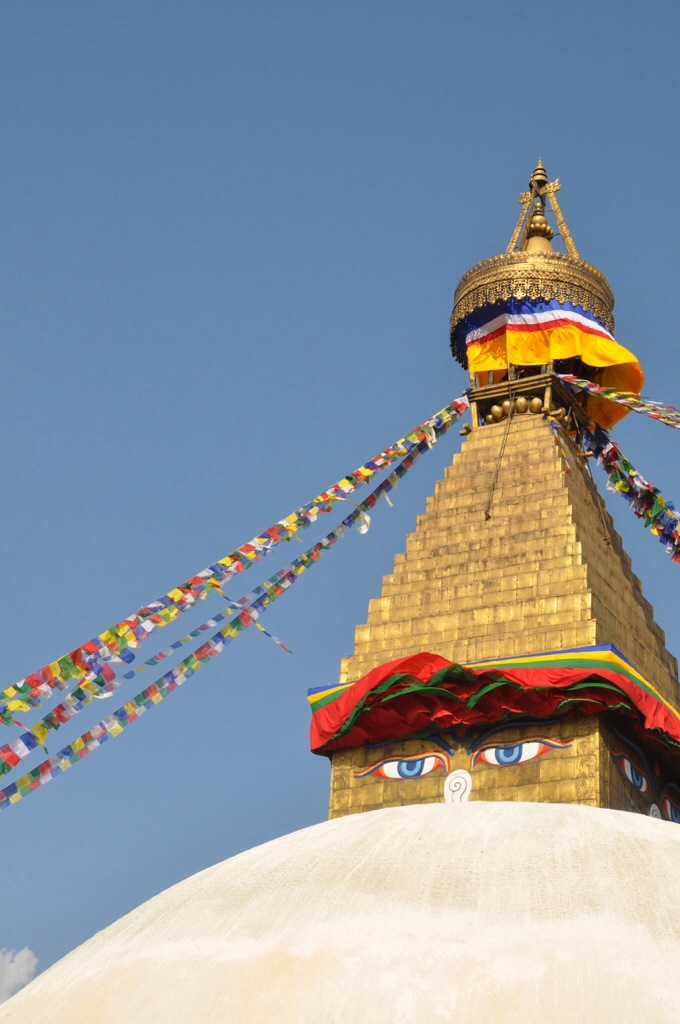
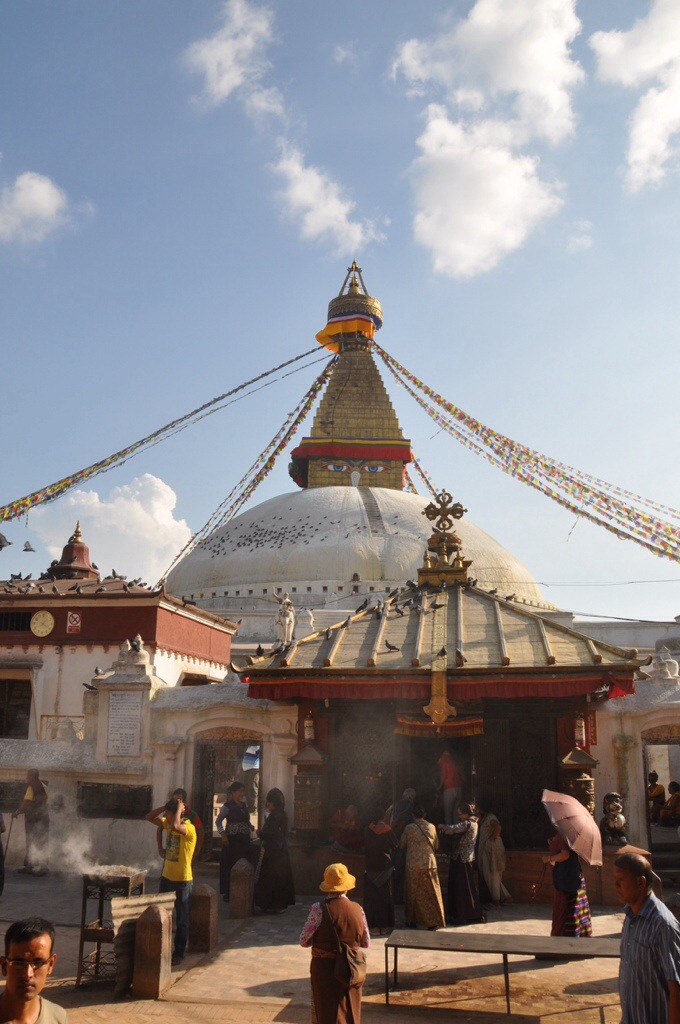
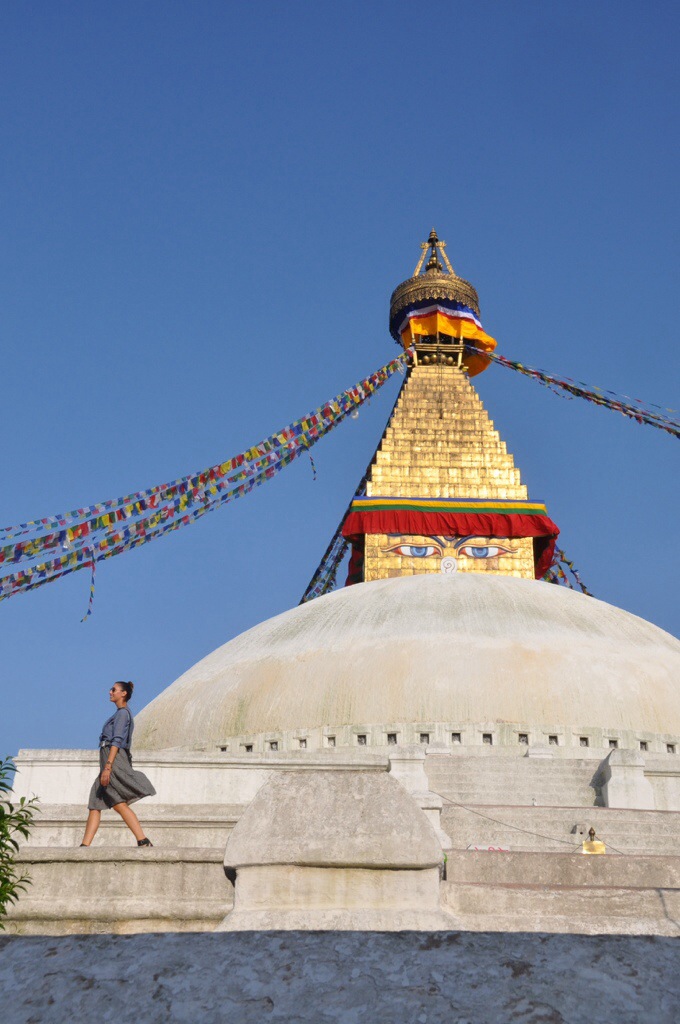
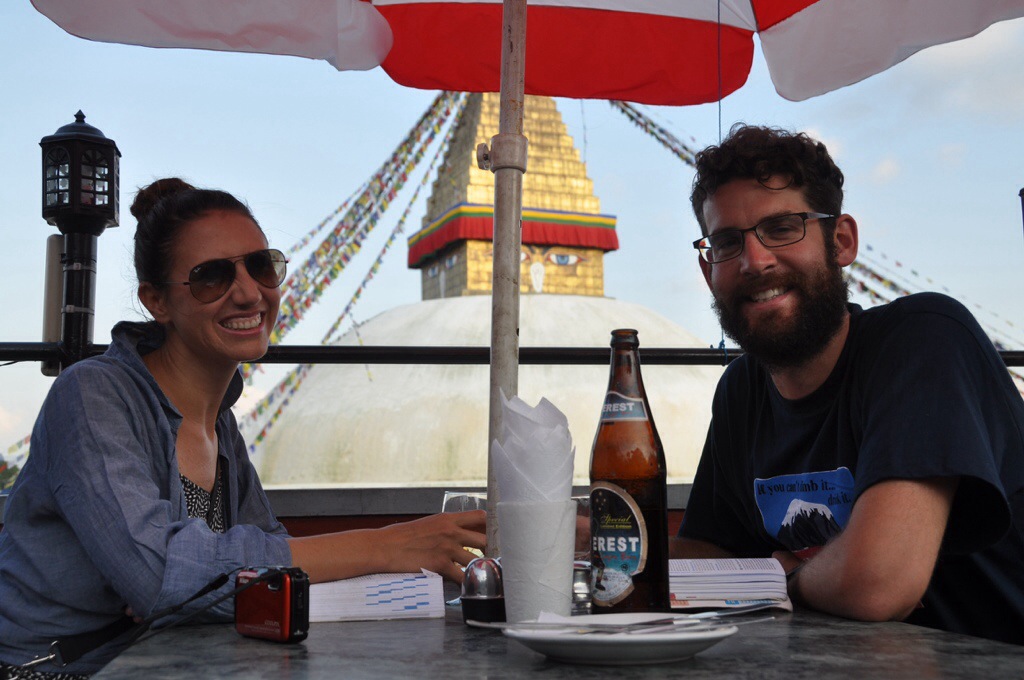
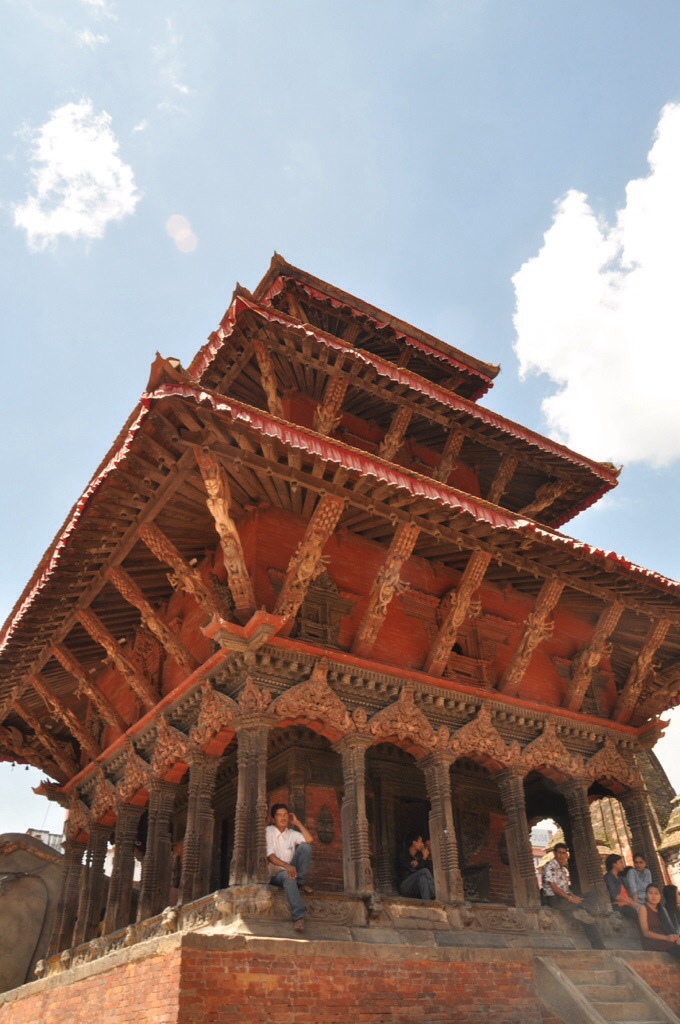
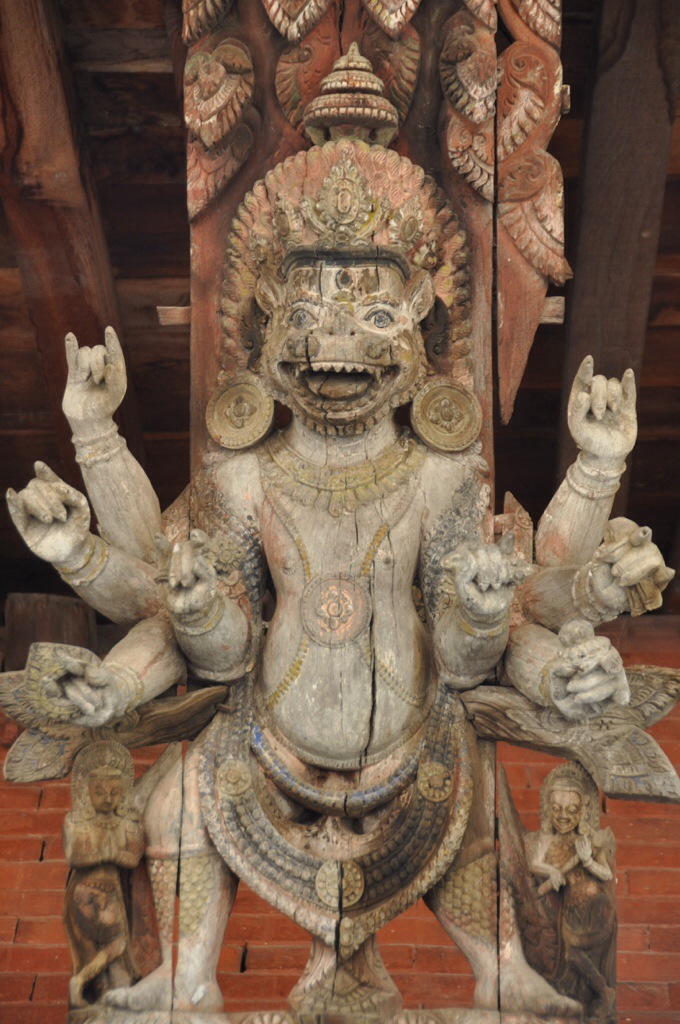
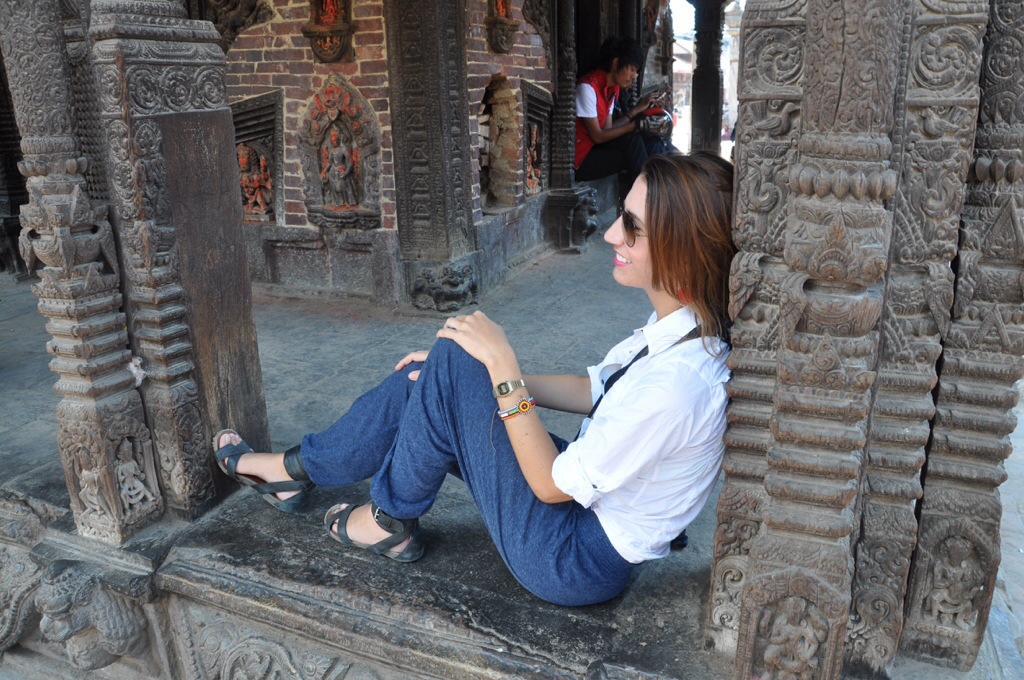
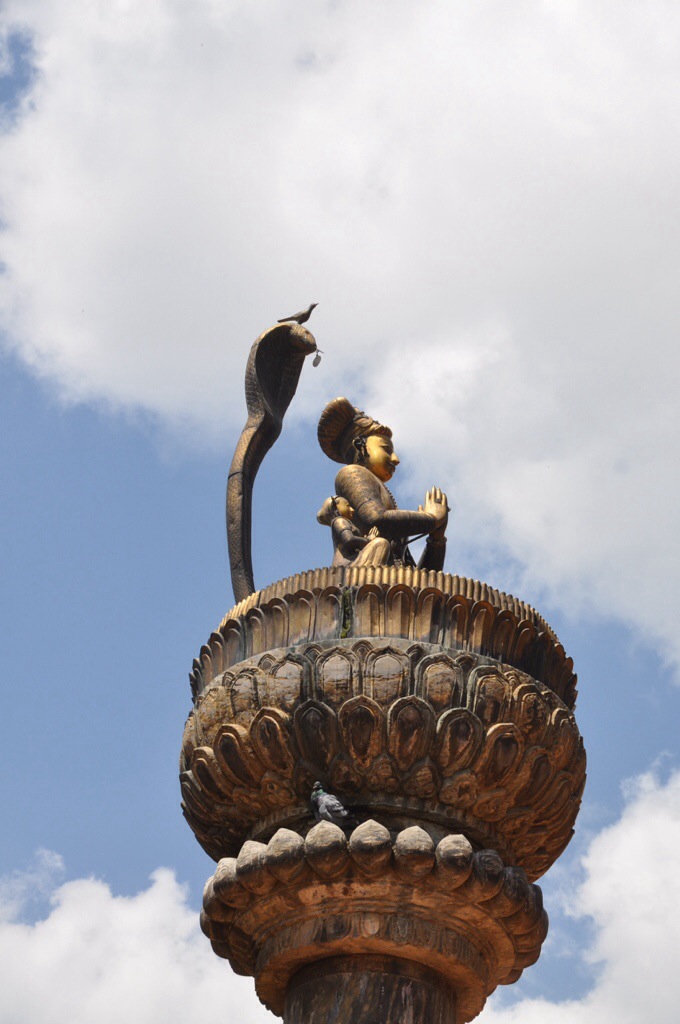
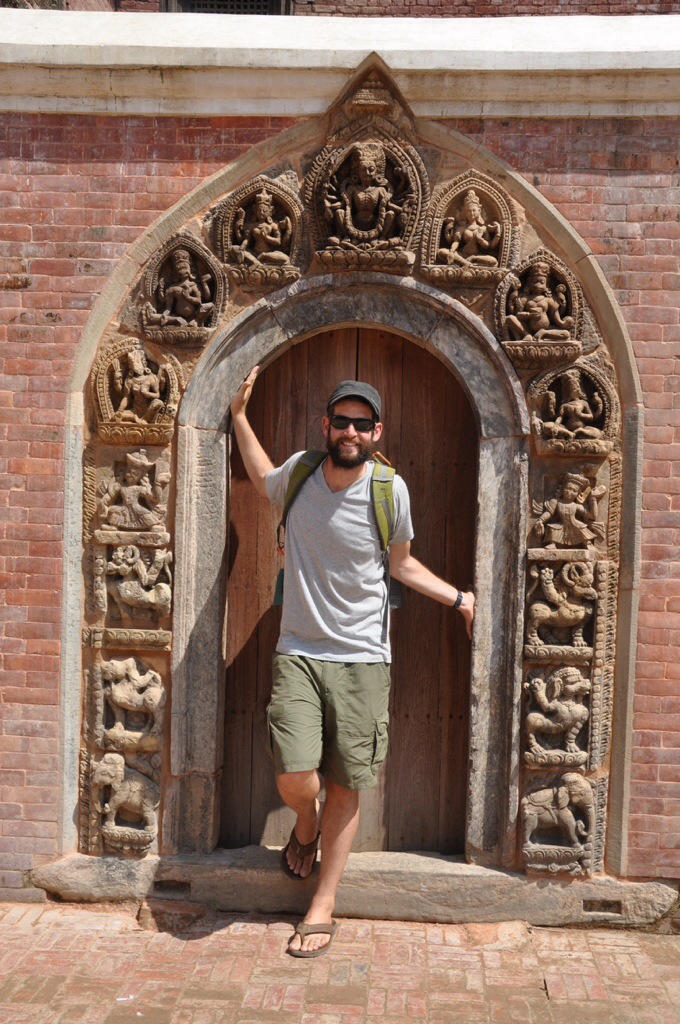
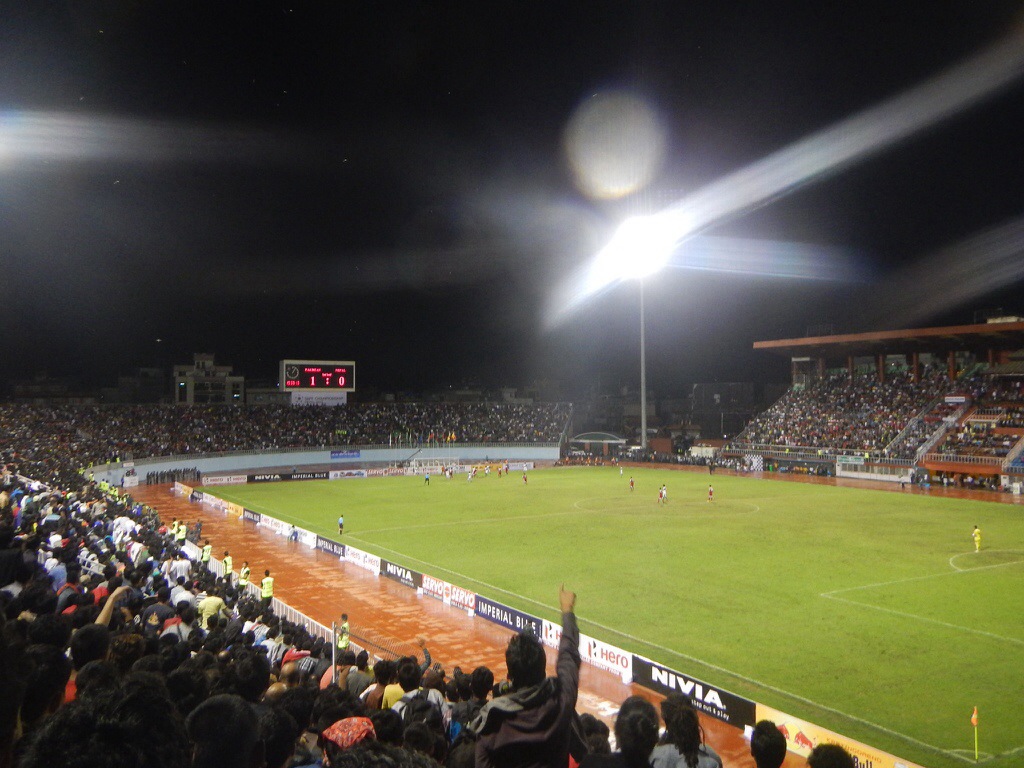
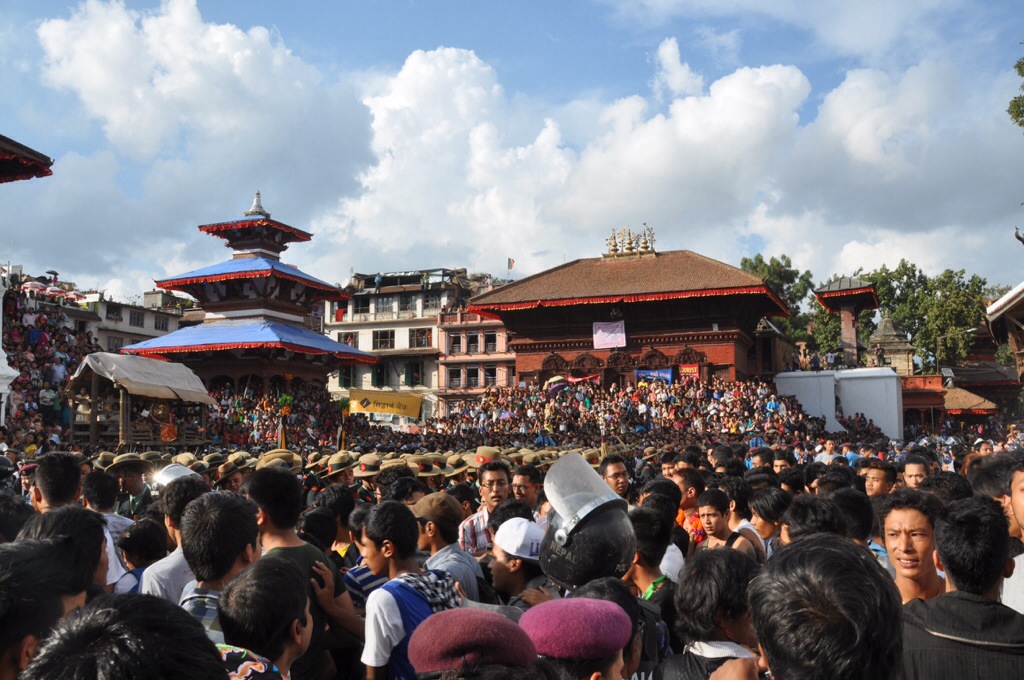
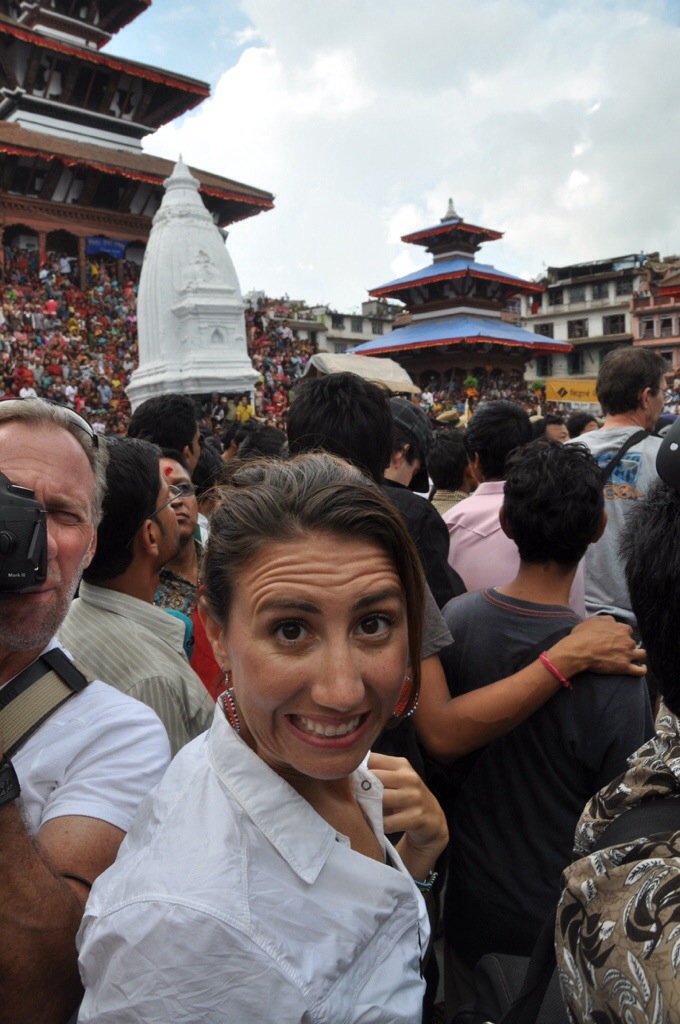
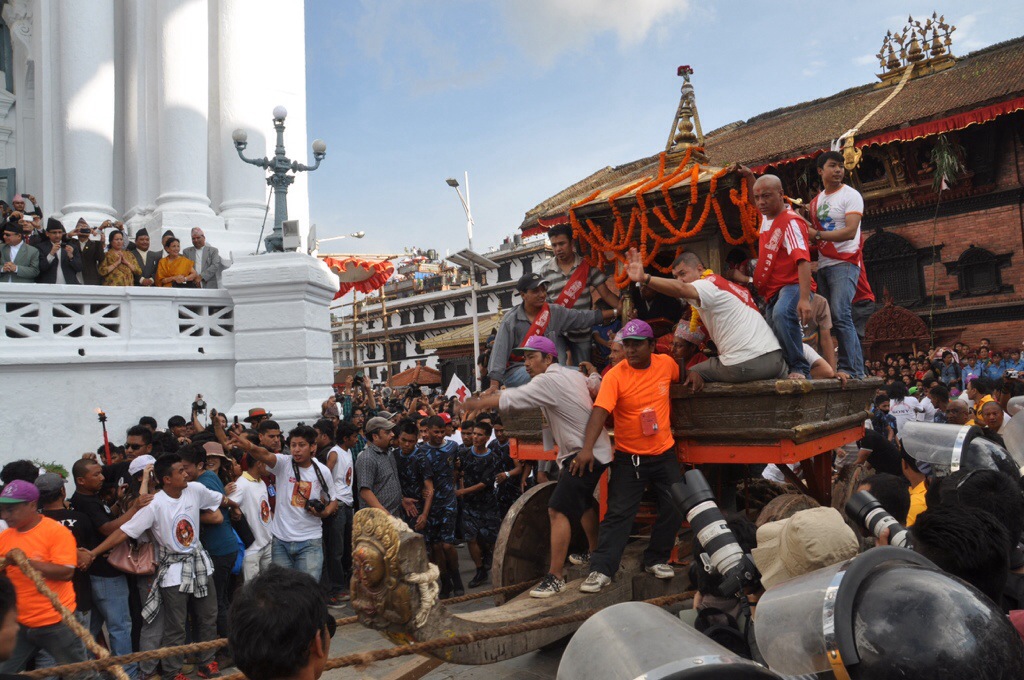
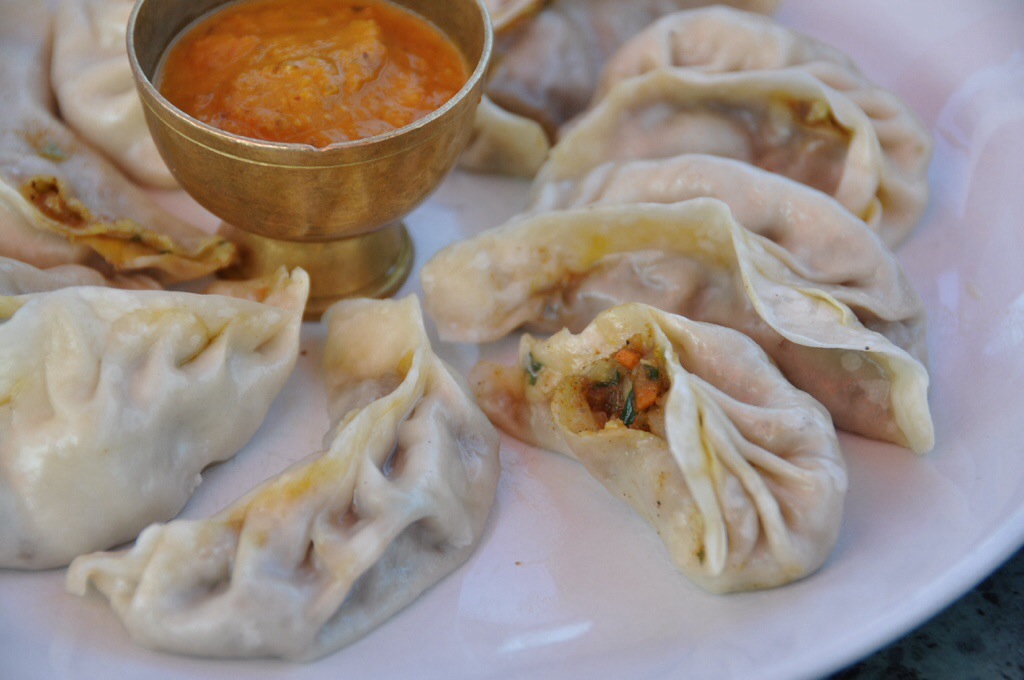
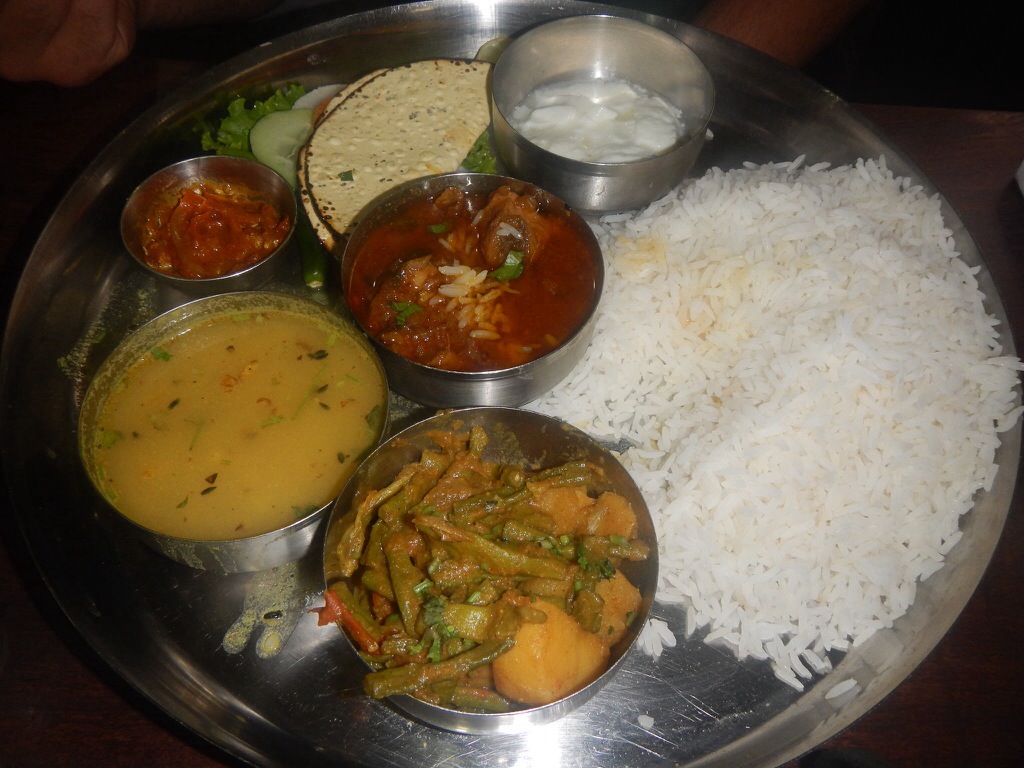
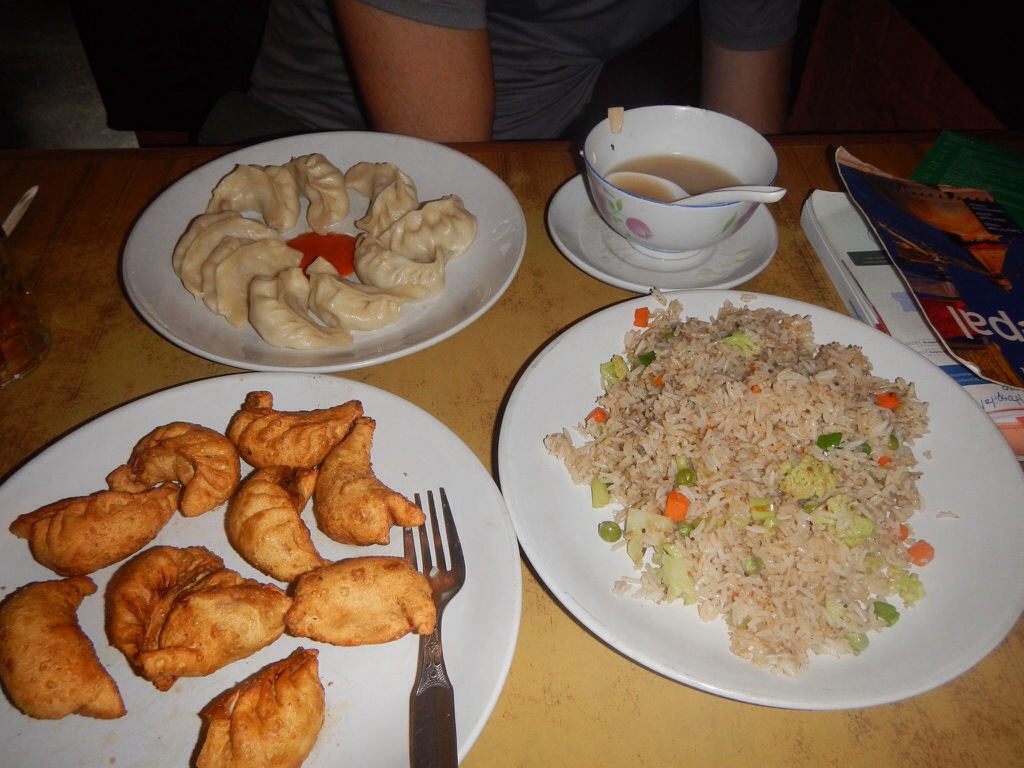
I feel like I’ve just taken an exciting trip to Kathmandu!! The narrative and the photos made me feel like I was right there; the crowds, street views, food, temples, stupas. When we were in China, in Shangri La, we went to stupas and walked CLOCKWISE around so I could relate to that. So cool that you went to a soccer game! I think we need to send the Timbers Army to Kath to school the Nepalese on singing/cheering during a soccer game :-).
Thanks – yes, the soccer game experience was awesome and a lucky timing coincidence, even without the chants.
Wow!!! Each stop on your journey has been so unique. Thanks for the great descriptions & photos.
Thanks